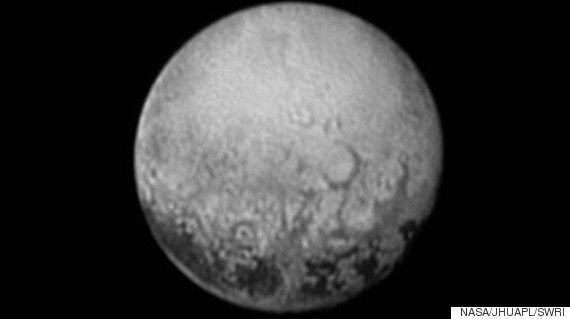NASA's New Horizons spacecraft has captured the clearest picture of Pluto's mysterious far side for what will be decades.

The photo gives us our clearest and last view of the planet's mysterious 'dark spots' which, at over 300 miles in length, are puzzling scientists as to their origin.
The dark spots have gained attention for a number of reason ranging from the the spacing of the dark spots to their composition.
Jeff Moore of NASA’s Ames Research Center, Mountain View, California, sums it up saying. “We can’t tell whether they’re plateaus or plains, or whether they’re brightness variations on a completely smooth surface.”

On the 14 July New Horizons will reach its mission destination. At around 03:17 GMT the spacecraft will cease communications and divert almost all of its power towards capturing the planet.
Passing Pluto at a distance of just 7,800 miles the spacecraft will give us our clearest look yet. It's a major landmark as it'll be the last of the 'classical' nine planets that inhabit our Solar System to be visited by a spacecraft from Earth.
Shooting past Pluto at a speed of 30,800 miles per hour, New Horizons will use an array of scientific instruments to capture data in what will be an evidence-grabbing frenzy.
The spacecraft has taken nearly 10 years to get to where it is now and has just under a million miles to go before it reaches its destination.
With over five billion kilometres now separating New Horizons from Earth communications now take hours to travel back to Earth so it won't be until Wednesday before NASA is able to reveal any images of the planet.
NASA will then release a number of preliminary pictures, however it's in the coming days that the real fun will begin as images expected to be hundreds of times clearer than what we've seen currently are sent back to Earth.
While the 10-year mission is obviously focused around Pluto, the team at NASA have built the spacecraft to survive long after it passes the planet.
READ MORE:
Extra fuel has been included along with solar panels that are designed to work in far lower light levels than can be found at Pluto's extreme range.
The hope is that New Horizons will be able to go deep into the Kuiper Belt where it'll use its long-range communications system to send back new data on what lies beyond.